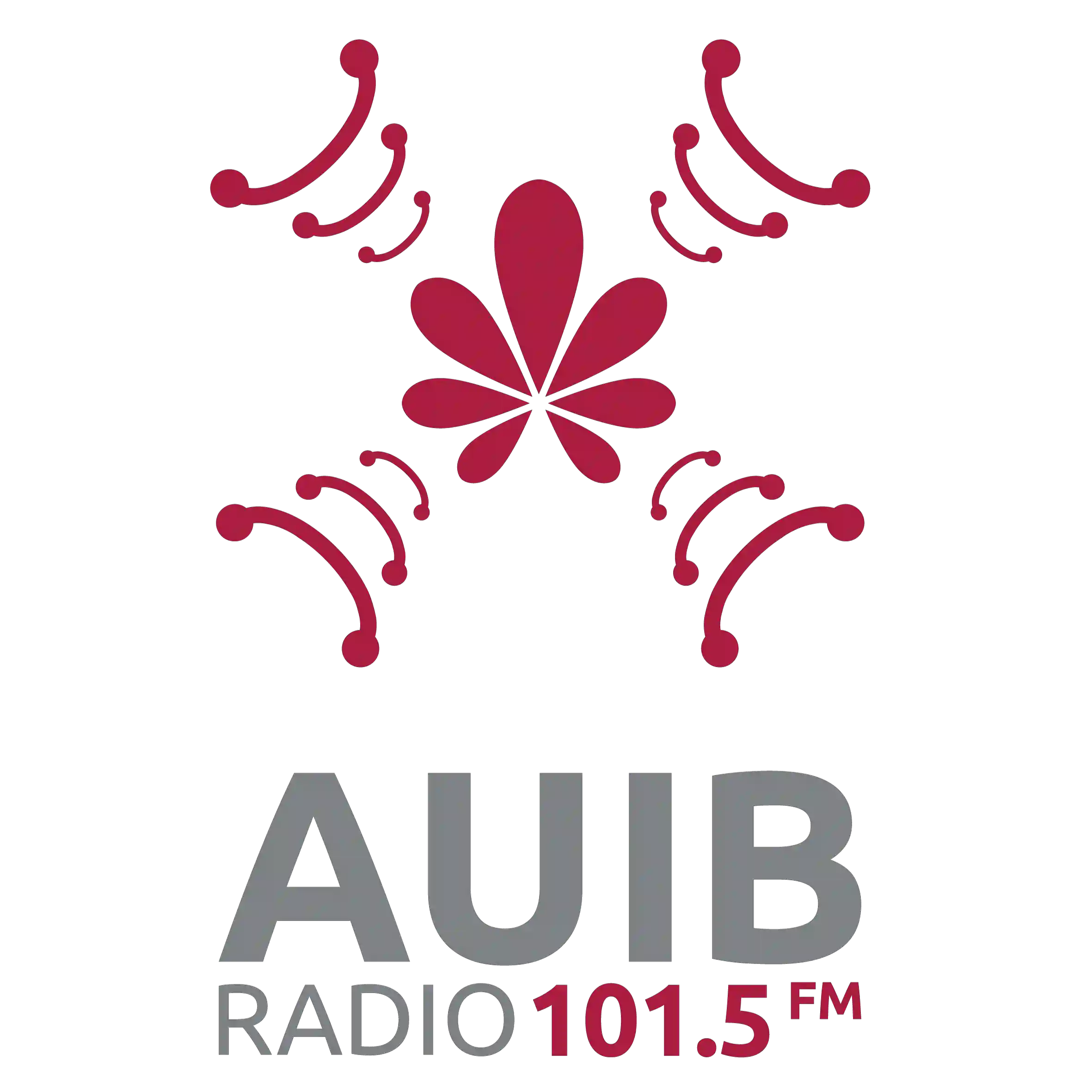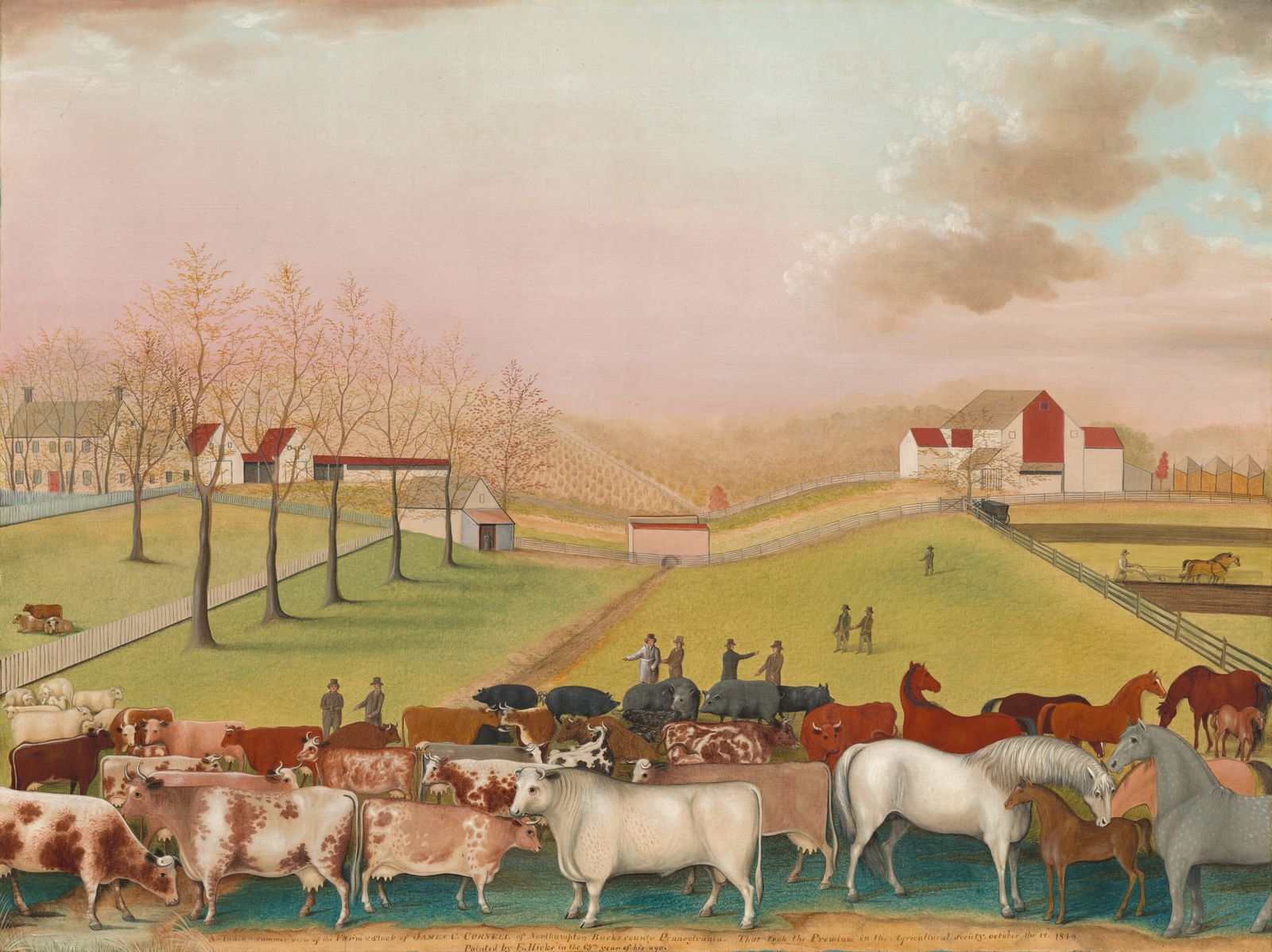


Edward Hicks began his working life young, apprenticing to a coachbuilder in Pennsylvania at just 13. By 1811, he had become a Quaker minister, but he struggled to reconcile his religious calling with his passion for painting—often worrying that time spent with a brush in hand was time taken away from “the Lord’s work.”
This painting is clearly identified by Hicks himself in a long inscription running along the bottom: “An Indian summer view of the Farm & Stock OF JAMES C. CORNELL of Northampton Bucks county Pennsylvania. That took the Premium in the Agricultural society, October the 12, 1848 Painted by E. Hicks in the 69th year of his age.” The punctuation and capitalization may be a bit irregular, but the confident lettering reflects Hicks’s early training as a sign painter.
Without formal academic art training, Hicks painted with the straightforward style of a folk artist. The line of livestock in the foreground might look simple at first glance, but each animal is lovingly rendered, clearly meant to be recognized and admired. His eye for decorative detail shows in the tidy arrangement of fences, and the bold red and crisp white of the house and barn create a sense of balance on either side of the scene. While the figures and buildings have a stark, almost cut-out quality, Hicks gently blends the colors over the orchard, hinting at a landscape that stretches quietly beyond what’s immediately visible.